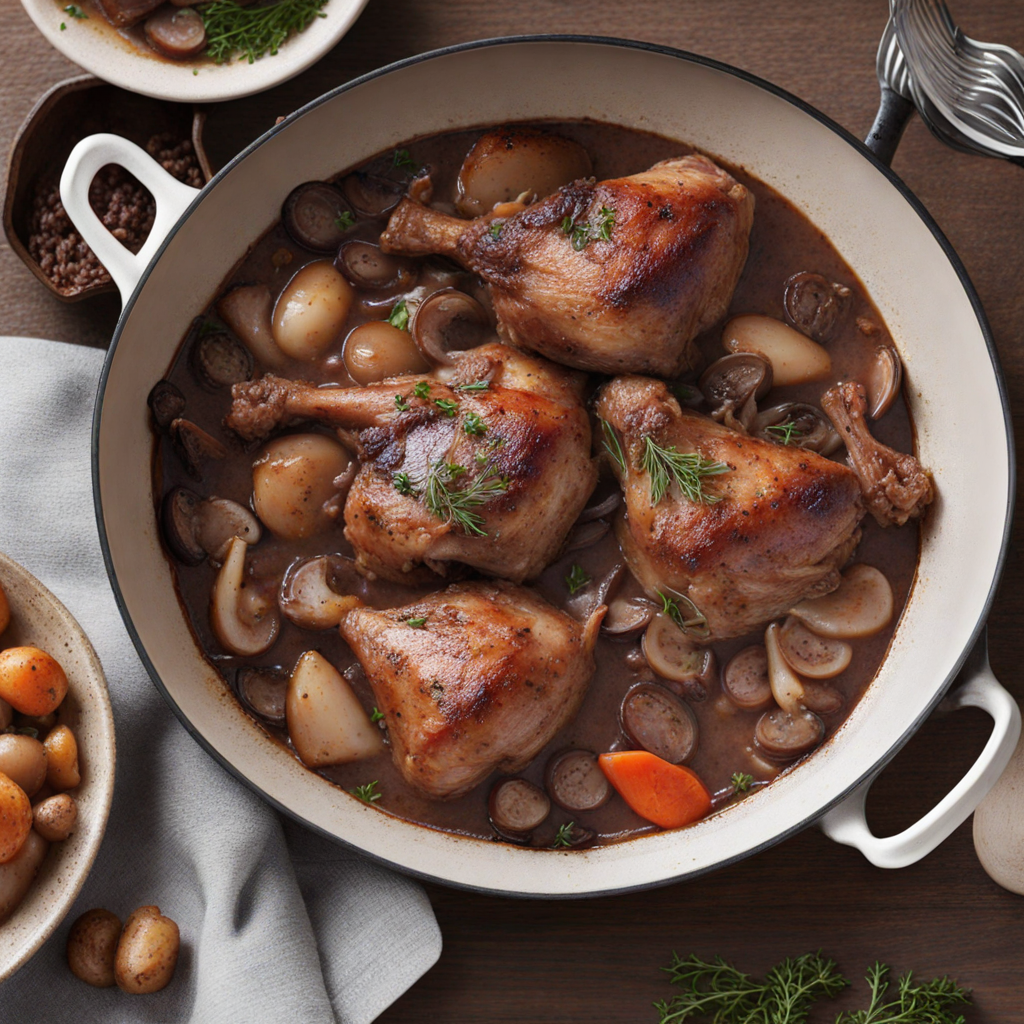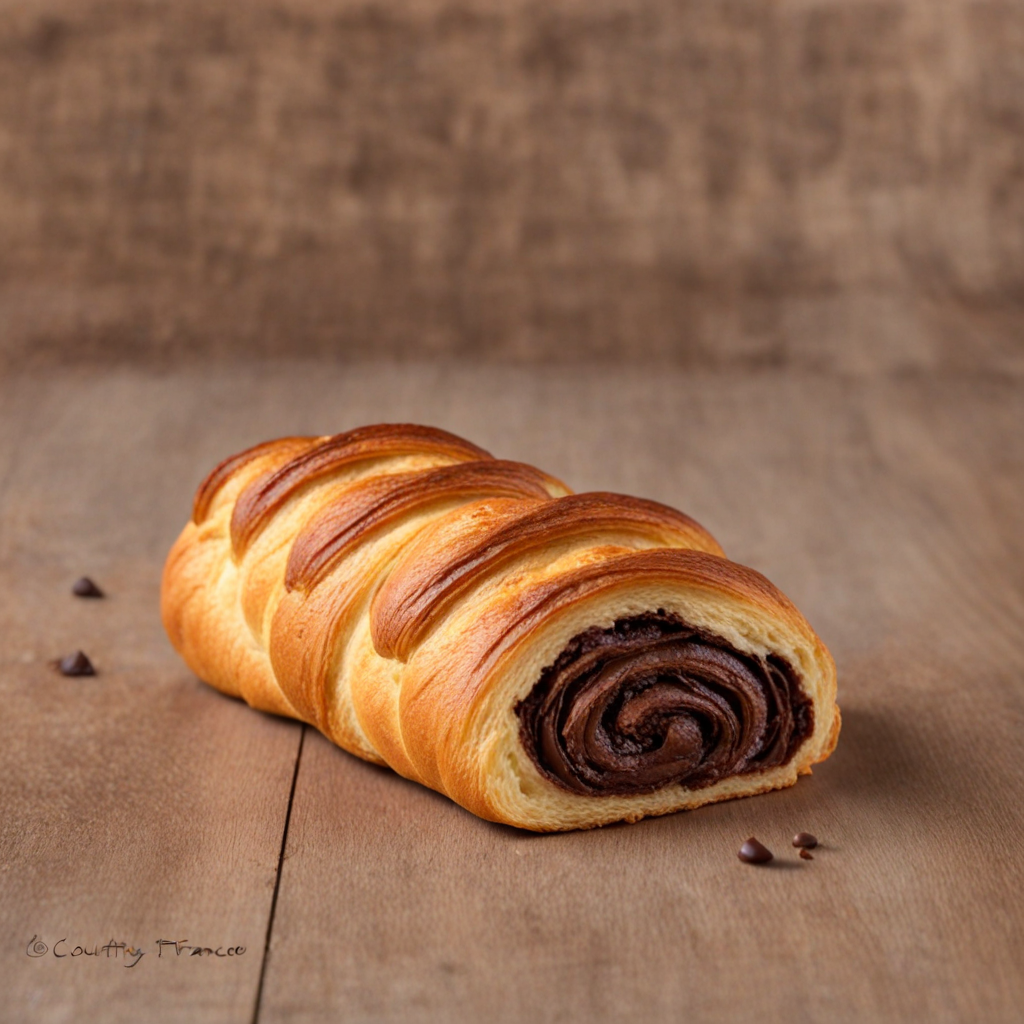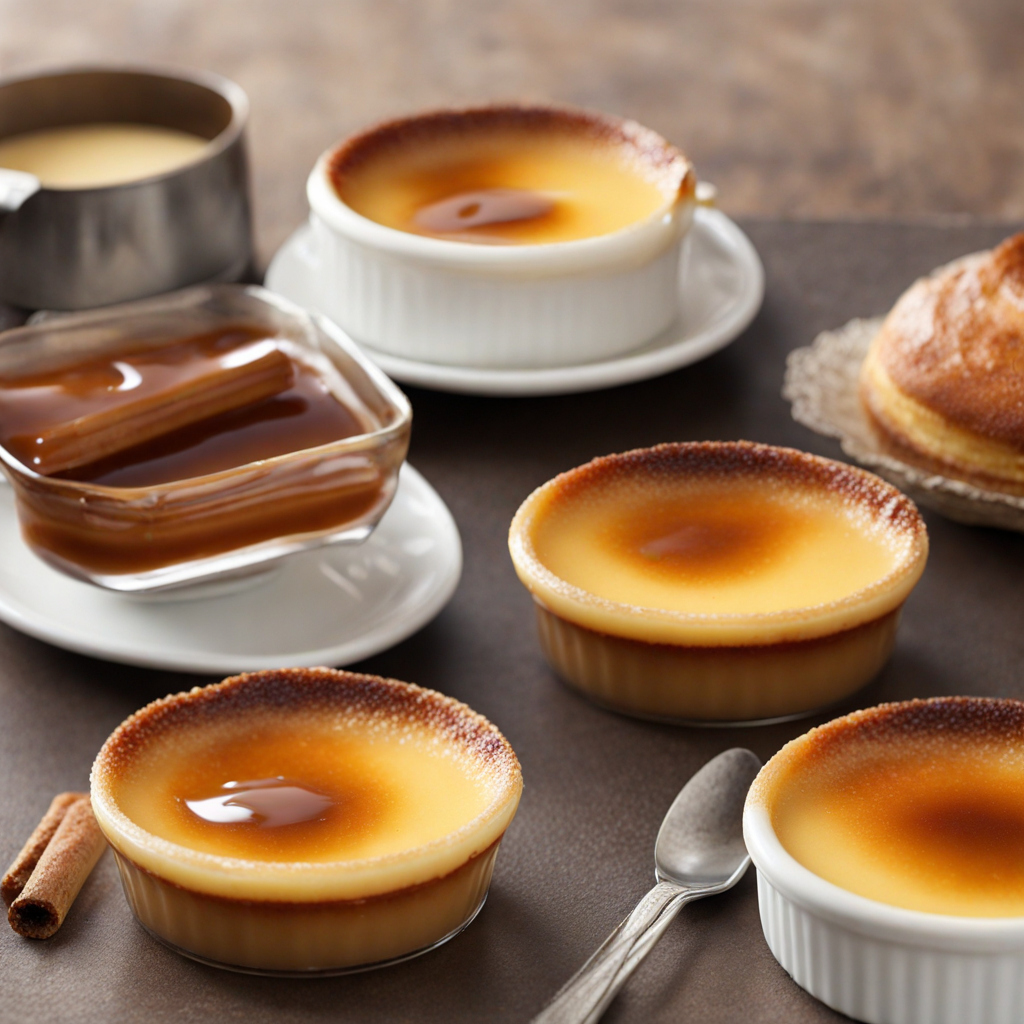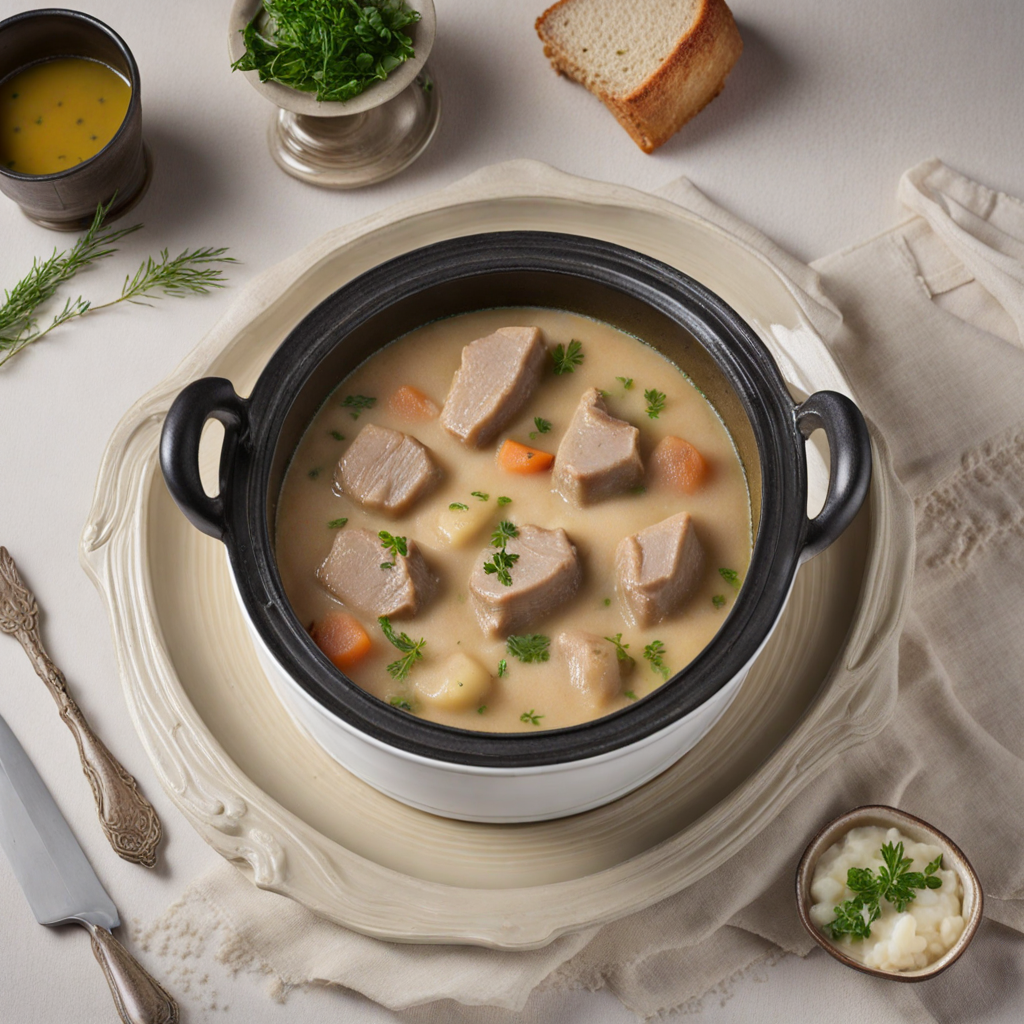Coq au Vin
Coq au Vin is a classic French dish that beautifully marries the rich flavors of chicken with the deep, complex notes of red wine. Traditionally made with a rooster, this savory stew showcases the tender meat slowly braised in a robust red wine, often from the Burgundy region, which adds a velvety texture and a hint of fruitiness. The dish is further enriched with aromatic herbs such as thyme and bay leaves, which infuse the sauce with a fragrant depth that is both earthy and uplifting. As the chicken cooks, it absorbs the wine's flavors while being accompanied by a medley of vegetables. Carrots, onions, and mushrooms contribute a natural sweetness and umami, creating a harmonious balance with the acidity of the wine. The slow cooking process allows the ingredients to meld together, resulting in a luxurious sauce that is perfect for mopping up with crusty French bread or served over creamy mashed potatoes for an unforgettable dining experience. Coq au Vin is not just a meal; it’s a celebration of French culinary tradition. Often served during gatherings and special occasions, this dish invites you to savor the essence of rustic French cooking. With every bite, you’ll experience the tender, flavorful chicken and the aromatic sauce that captures the heart of France, making it an exceptional choice for anyone eager to explore new and exciting tastes.
How It Became This Dish
Coq au Vin: A Culinary Journey Through French History #### Origins of Coq au Vin Coq au vin, a dish that conjures images of rustic French countryside and hearty meals, has its roots steeped deep in the agricultural traditions of France. The name itself translates to "rooster in wine," which hints at its earliest iterations. The dish is believed to date back to ancient times when cooking with wine was a common practice in various cultures, but it gained prominence in France during the Middle Ages. During this time, roosters were often used in cooking due to their availability and the fact that they were a source of sustenance for rural families. The practice of braising meats in wine was not only a way to enhance flavor but also a technique to tenderize tougher cuts of meat. The regions of Burgundy, in particular, are heralded as the birthplace of coq au vin, where the local red wine would have been a natural choice for this dish. #### Cultural Significance Coq au vin embodies more than just a recipe; it reflects the heart of French culinary philosophy that values the use of local ingredients and traditional cooking methods. It is a dish that tells the story of peasant life in France, where meals were hearty and made from what was readily available. This technique of slow cooking allowed the flavors to meld together, showcasing the beauty of simplicity and the importance of patience in the kitchen. Moreover, coq au vin has historically been associated with communal gatherings. It was often prepared for family celebrations and feasts, signifying abundance and the joy of sharing. The dish invites a sense of togetherness; its preparation is often a communal effort, with family members participating in different stages of cooking. This cultural significance is part of what keeps the dish alive in modern French cuisine. #### Development Over Time As time progressed, coq au vin transitioned from a peasant dish to a staple of French gastronomy. The 19th century saw the dish gain popularity among the bourgeoisie, thanks in part to the writings of prominent culinary figures. Notably, the chef Auguste Escoffier, who is often regarded as the father of modern French cuisine, included coq au vin in his repertoire, elevating it to a dish of fine dining. His contributions helped codify many traditional French recipes, ensuring that they remained relevant and respected in the culinary world. In the 20th century, coq au vin became synonymous with French cuisine globally. Its inclusion in cookbooks and the rise of French bistros and brasseries around the world helped solidify its status as a classic. The dish became a symbol of French culinary heritage, showcasing the art of slow cooking and the importance of wine in French culture. In terms of preparation, while the classic recipe calls for rooster, the use of chicken has become more common due to the rooster's scarcity and the practicalities of modern cooking. The dish typically consists of chicken braised with wine, lardons (small strips or cubes of pork fat), mushrooms, onions, and garlic, all simmered to create a rich, flavorful sauce. The wine used is usually a red Burgundy, which adds depth and character to the dish. #### Regional Variations As with many traditional dishes, regional variations of coq au vin have emerged over the years, each adding its unique twist. In the mountainous region of Savoie, for example, coq au vin may be prepared with white wine rather than red, showcasing the local grape varieties and culinary preferences. In other regions, the dish may incorporate local herbs and spices, or even different types of meat, reflecting the diverse agricultural landscapes of France. Despite these variations, the essence of coq au vin remains the same: it is a dish of comfort, warmth, and tradition. It serves as a reminder of the importance of using high-quality ingredients and the time-honored techniques that have been passed down through generations. #### Coq au Vin in Modern Cuisine In contemporary French dining, coq au vin continues to enjoy popularity as both a home-cooked meal and a feature on restaurant menus. It has also inspired countless adaptations in international cuisine, where chefs explore new flavor profiles and presentation styles. Variations can be found in fusion cuisines, where chefs might incorporate elements from other culinary traditions while retaining the core essence of the dish. Modern cookbooks and television cooking shows have further popularized coq au vin, often showcasing it as a dish that is both approachable for home cooks and impressive enough for festive occasions. Today, the dish serves as a bridge between past and present, connecting the rich history of French cuisine with the evolving tastes of modern diners. #### Conclusion Coq au vin is more than just a classic French dish; it is a testament to the culinary traditions that have shaped France's gastronomic identity. From its origins in the vineyards and farms of Burgundy to its status as a beloved comfort food, it embodies the principles of simplicity, community, and the celebration of local ingredients. As food trends continue to evolve, coq au vin stands as a reminder of the value of heritage cooking and the joys of sharing a meal with loved ones. Whether enjoyed in a rustic bistro in the heart of Paris or prepared in a home kitchen around the world, coq au vin remains a dish that nourishes not only the body but also the spirit, keeping the rich tapestry of French culinary history alive for generations to come.
You may like
Discover local flavors from France







